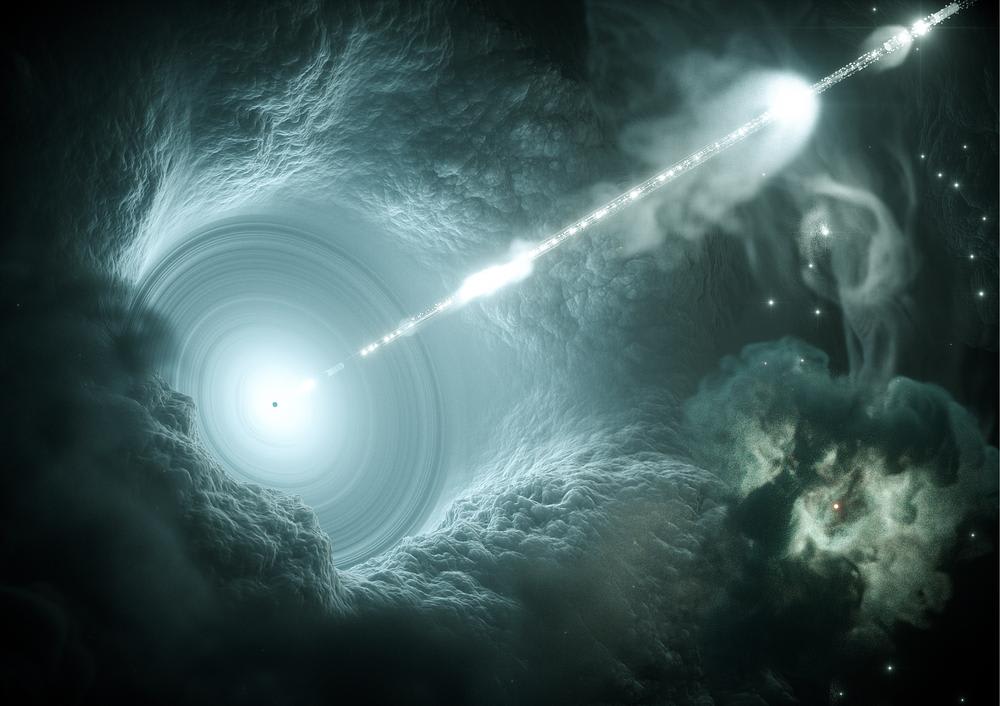Each breakthrough in neutrino astronomy is followed by a myriad of ideas on how to further exploit IceCube data. After the discovery of a flux of very high energy neutrinos in 2013, improvements and variations of the veto technique—which now can select neutrinos from the huge atmospheric muon background in all directions—are currently used at least as often as the initial technique, which used the Earth as a filter and only selected neutrinos from the Northern Hemisphere.
More recently, the identification of the first likely source of high-energy neutrinos and cosmic rays, the gamma-ray blazar TXS 0506+056 (TXS hereafter), has boosted new analyses to learn about the extreme universe using multimessenger astronomy approaches.
In a new paper by the IceCube Collaboration in partnership with scientists from the Fermi-LAT collaboration and the ASAS-SN telescopes, researchers went back to eight years of archived IceCube data searching for high-energy neutrino events that could have triggered an alert such as IC-170922A, the neutrino that initiated a surge of observations across the electromagnetic spectrum, which culminated with the identification of TXS as its source.
A second neutrino, dubbed IC-141209A, was found in spatial coincidence with blazar GB6 J1040+0617 (GB6 hereafter), a plausible but unconfirmed source of this neutrino that will be further investigated for flares of lower energy neutrinos.
The results of this long-term search of high-energy neutrino emission from blazars also confirm that this type of active galaxy cannot account for the majority of the diffuse neutrino flux seen by IceCube and that the source of most of the high-energy neutrinos is still unknown. These results have recently been submitted to Astronomy and Astrophysics.

In 2017, the multimessenger observations of TXS triggered by the IceCube alert built up unique and wide-ranging data from which astronomers are still deciphering a new understanding of blazars. The finding of a second plausible neutrino source in a pool of fewer than 40 high-energy events turns blazar GB6 into an object worth studying in more depth.
“We studied the archival neutrino alerts and checked to see if a known Fermi-LAT source was within the 90% error contour. Besides TXS, GB6 was the only source which fulfilled our selection criteria,” explains Simone Garrappa, a PhD candidate at DESY and one of the main analyzers of this work
In this paper, researchers have looked at gamma-ray and multiwavelength emission from GB6 and compared it to TXS. Blazar GB6 is a source of similar luminosity, but while Fermi-LAT had observed a long period of enhanced emission from TXS at the time of the detection of IC-170922A, GB6 showed modest gamma-ray activity when neutrino IC-141209A was emitted. However, GB6 also showed a bright optical flare recorded by the ASAS-SN telescopes, which was almost 10 times the typical emission during a low-state period. Looking at the 10-year gamma-ray light curve, scientists show that GB6 was going through a period of enhanced activity around the time when the high-energy neutrino was detected, which together with expectations for neutrino emission from current blazar models makes this blazar a plausible source of neutrino IC-141209A. Both sources are also located at a similar declination, near the horizon from the South Pole, which is the region where IceCube is most sensitive to high-energy neutrinos.
The detailed, long-term study of high-energy emission from TXS did not show any significant increased activity in gamma rays during a second, lower-energy neutrino flare detected by IceCube in 2014/15 archived data. The study of lower-energy neutrino emission from GB6 is still under investigation and will bring new insights into the processes that power blazars.
info “Investigation of two Fermi-LAT gamma-ray blazars coincident with high-energy neutrinos detected by IceCube,” the Fermi-LAT collaboration, ASS-SN, and the IceCube Collaboration: S. Garrappa et al., The Astrophysical Journal 880 (2019) 2, iopscience.iop.org, arxiv.org/abs/1901.10806